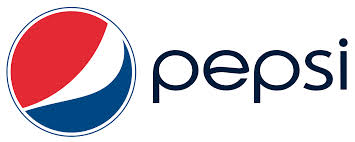Pepsico (PEP) has an excellent track record for returning cash to shareholders and an even better command of its market. Besides Coca Cola (KO), there is really no other company that is able to boast the brand loyalty and control of snacks and beverages. Despite good cash flows and a solid future, the shares are only fairly-valued at best and there is little reason to start a position right now. Investors should still realize a decent 3% annual dividend return but may not see much from appreciation.
Investment Highlights
• One of the lowest measures of volatility around with a beta of just 0.35
• Highly leveraged with 58% of the capital structure financed with debt leaves less room for error
• Free cash flows and balance sheet cash have increased though will likely go to pay down debt
Overview
At $134 billion, Pepsi is three-quarters the size of Coca Cola but no less a player in snacks and beverages around the world. While Coca Cola is more focused on beverages, Pepsi is more diversified into snacks with strong brands such as Lays, Ruffles, Doritos, Cheetos and Fritos. Its Quaker Foods segment also competes in breakfast with Quaker Oats, Aunt Jemima, Capn Crunch and Rice-a-Roni.

Contrary to the strategy at Coca Cola, Pepsi has consolidated its largest bottlers since 2010 and is a more vertically integrated model. Besides strong names in the soft-drink market, the company also owns Gatorade and Tropicana. While Coca Cola has the larger market share of soft-drinks, Pepsi leads in snack foods and non-carbonated drinks.
It seems the company will even try to market a limited-edition line of apparel, accessories and electronics. The patterns will be created by street artists and feature Pepsi’s traditional colors and will coincide with the World Cup. The company is not a sponsor of the FIFA World Cup but needed some way to keep the brand alive as Coca Cola spends millions in advertising and sponsorships during the games.
Fundamentals
Revenue growth of just 1.4% last year is below the 3-year annualized rate of 4.7% though the company has controlled costs a little better. The operating margin improved by one percent to 15% and the company has consistently increased earnings per share.
The balance sheet is where Pepsi may be relatively weak with cash of $10.1 billion against current liabilities of $19.5 billion and long-term debt of $24.2 billion. While the company is able to issue debt at low rates, a significant amount of income goes to pay interest payments.
Cash flow from operations increased 14% to $9.7 billion in 2013 though cash flow over the last four quarters is down to $9.2 billion. The company has spent an average of $2.8 billion in capital expenditures each of the last five years. Free cash flow has consistently increased with $6.9 billion booked in 2013.
Dividends and Growth
Pepsi is a Dividend Aristocrat with 42 consecutive years of dividend increases and payments since 1952. The current yield of 3.0% is slightly above the 2.8% average over the last five years but the 50% payout ratio has held relatively consistent.
The company recently announced an increase in its quarterly payment to $0.65 per share and has increased the dividend by 6.0% annually over the last five years.
The company returned $3.0 billion to shareholders last year through its share repurchase program and has reduced the number of shares outstanding by an annual rate of 1.1% over the last three years. Combined with the dividend payment, the company returned $6.4 billion to investors in 2013. This is only slightly less than the amount booked for free cash flow, leaving little room for upside growth in cash return.
Valuation
Shares currently trade for 19.8 times trailing earnings, well above the 17.2 times multiple average over the last five years. This would imply the stock is about 15% over-valued but is still under the 20.8 times price multiple for the industry so it may be that the whole industry is over-valued. The shares bottomed around 16.1 times trailing earnings in 2009 and reached 24.7 times earnings in 2005.
Valuing the shares on future cash flows presents a slightly more positive view but still only for a fairly-valued market price. Despite the company’s solid credit rating, the fact that it has $32 billion in short- and long-term debt limits its ability to increase returns through more leverage. Debt is already 58% of the company’s capital structure and nearly 10% of operating income goes to pay interest.
One bright spot for investors, even at fairly- or slightly over-valued, is the stock’s super low volatility relative to the market. The shares have a beta of just 0.35 which means the stock is only about a third as volatile as the general market. While investors won’t see share prices surge when the market gets overheated, you are also likely to see your investment value remain steady when the bottom falls out of other stocks.
More often than not, if you do not have strong conviction on the upside potential for a stock, you risk selling out of it when a hiccup takes shares lower. It’s best to just stay out of these until valuation improves or you have another good reason to buy. That may be the case for Pepsi.

Nice write up Zach. I like Pepsi, mostly for its snack business….and dividend history. My only real question is… Will the stock ever pull back so it is a reasonable buy? I think eventually, but God knows when.
-Bryan
Always enjoy reading your analysis. Thanks for sharing your research! Best Wishes. AFFJ